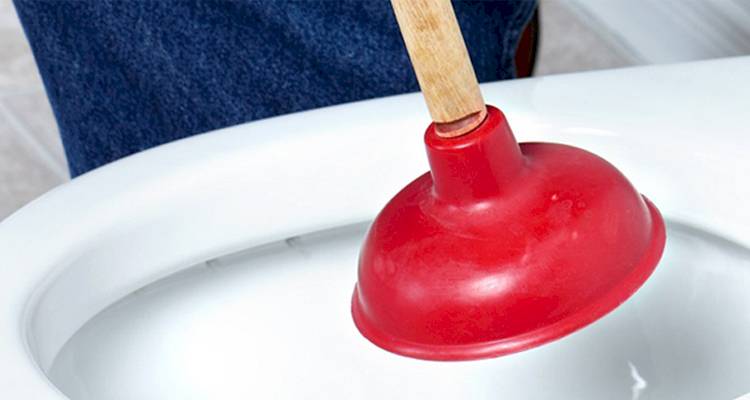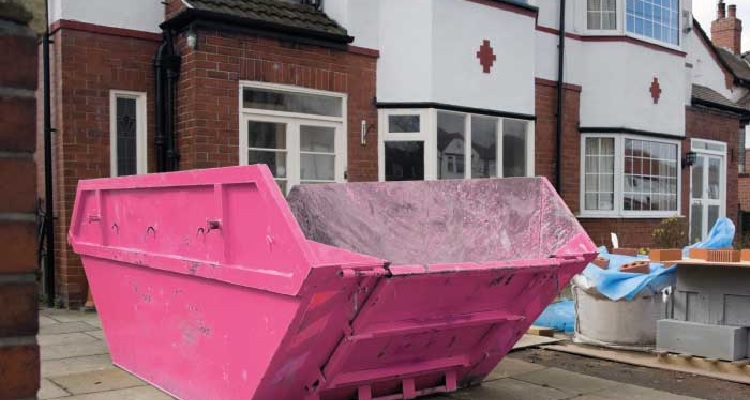Cost to Stain a Fence
- The average cost to stain fences is around £400.
- The job will take approximately 1 to 2 days to complete.
- A breakdown of the material and labour cost factors to stain a fence
- How long the job typically takes and what's involved.
- How to find and hire a fence painter.
Need your fences stained and want to find out the costs?
In this guide, we break down fence painting costs, including the average hourly rate for fence painting, how much fence paint or stain you’ll need, and the price of hiring garden fence painters for different types of fences.
Getting quotes early will give you the best idea of what’s realistic. You don’t need to be ready to start work before chatting with a local fence painting service!
Get free quotes from fence painters near you on MyJobQuote. It's quick, easy, and there's no obligation to go ahead.
See our full fence staining guide below.
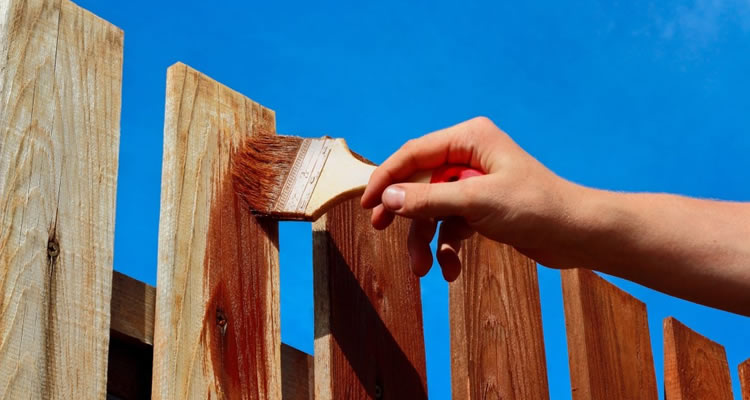
£400
Table of Contents
- How Much Does Staining a Fence Cost?
- Supply Costs Only
- Additional Costs to Consider
- Labour Costs and Timescales
- Cost Factors of Staining a Fence
- What's Involved in Fence Staining?
- Building Regulations & Planning Permission for Fence Staining
- Choosing a Fence Stain
- Benefits of Using Fence Stain
- Cost of Removing Fence Stain
- Hiring Contractors to Stain a Fence Checklist
How Much Does Staining a Fence Cost?
To keep a wooden fence looking its best and to protect it from the elements, you need to either paint or stain it every 2 to 3 years as a way to replace the previous layer of stain.
Where fences are concerned, moisture is the main enemy and staining or painting the fence will create a barrier that will prevent moisture from damaging the wood.
How often you should paint or stain your fence will mostly depend on the weather, as wet regions will need staining more frequently. Most experts recommend staining fences once every 2 to 3 years, but you can check for beading yourself, as this gives a good indication of when the stain or paint needs to be re-applied.
On a stained and sealed fence, water should bead up on the surface, but if the water soaks in instead, it may be time for staining. The average cost to stain a fence is around £400 for material and labour costs for a contractor to do the work.
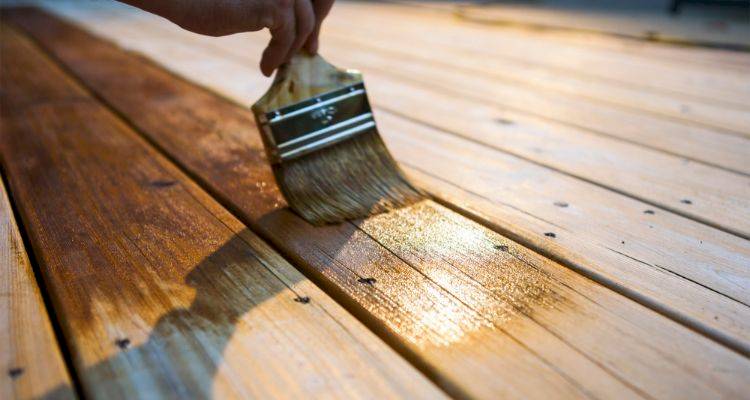
There is some debate amongst experts in terms of whether painting or staining is best. But either will provide protection and extend the life of your fence, so this is mostly a personal choice, however, painting a fence is usually less expensive.
Still, it may require doing more often, plus more preparation is generally needed before re-painting. Whereas staining is typically more expensive initially but lasts longer, and there is less ongoing work involved.
Staining is not a difficult job, but it is time-consuming, so many will hire a local contractor to do the job for them.
Rather than waste time searching for reliable tradespeople and sorting through all the cowboys, simply fill in a single form on this website to have tradespeople get in touch to supply quotes so you can easily compare prices for your job.
All the tradesmen are reviewed by real customers for peace of mind, and it only takes a few minutes just to enter your details with a brief outline of the job you want to do.
Should a cedar fence be painted or stained?
Fence Staining Prices
Below is a table with the average cost and timeframe for a contractor to stain a fence:
| Job Description | Duration | Material Cost | Labour Cost |
|---|---|---|---|
| 8 panels, 2m x 2m each with oil stain | 1 day | £20 | £150 |
| 12 panels, 2m x 2m each with oil stain | 1 – 2 days | £40 | £225 |
| 8 panels, 1m x 2m each with oil stain | 4 – 6 hours | £20 | £100 |
| 12 panels, 1m x 2m each with oil stain | 6 – 8 | £20 | £125 |
| 8 panels, 1m x 2m each with gel stain | 4 – 6 hours | £30 | £100 |
| 12 panels, 2m x 2m each with gel stain | 1 – 2 days | £40 | £225 |
| 8 panels, 1m x 2m each with dye stain | 5 – 6 hours | £35 | £120 |
| 12 panels, 2m x 2m each with dye stain | 1 – 2 days | £45 | £225 |
Supply Costs Only
If you're taking this on as a DIY project, then you'll need to check out the various supply costs of materials and equipment for the job. This can differ depending on the size, quality and type of fence you're after.
Below is a table with the average cost of all the supplies needed for staining a fence and their individual costs:
| Supply | Avg. Cost |
|---|---|
| Small wood fence with oil stain | £8 – £10 |
| Large wood fence with oil stain | £15 – £20 |
| Small wood fence with gel stain | £10 – £15 |
| Large wood fence with gel stain | £18 – £22 |
| Small wood fence with dye stain | £20 – £22 |
| Large wood fence with dye stain | £22 – £25 |
| Paintbrush set | £3 – £10 |
Additional Costs to Consider
Repairing Damaged Fence Panels
Before staining your fence, you should check the condition of the panels and posts. Any broken, warped, or rotting boards need to be repaired or replaced first to ensure the stain adheres properly and lasts longer.
If only a few panels are damaged, a fence panel replacement usually costs around £40–£60 per panel, including materials and labour. Replacing damaged posts or re-securing loose panels may add £80–£150 depending on access and the number of repairs needed.
Staining Your Shed
If you’re hiring a professional to stain your fence, you could also take the opportunity to have your shed stained at the same time. Many contractors offer a discounted rate for doing both in one visit, helping you get a consistent finish across your garden. The cost of having your shed stained typically adds around £150 to your overall budget.
Labour Costs and Timescales
The cost of labour for staining fences usually costs between £60 and £120 depending on location, size of fence type of stain, and how long it takes to complete, with a large fence averaging around £120 to £160.

One tradesman will usually work on this job, taking around a day to complete, possibly two if the fence and garden are larger than most. However, if you have large property grounds which require more staining, then it may take two tradespeople up to two days to complete, adding up labour costs.
Cost Factors of Staining a Fence
Size of Fence
The larger the size of the fence means more fence panels to stain, taking longer to complete and adding up labour costs. Smaller fences typically cost between £150 and £250, whilst large fences can cost between £300 and £400.
Type of Stain
There are several different types of staining options to choose from. Oil stains are the most common option and can be cheaper at around £15 for a litre bucket, whereas gel stains are also pretty standard at approximately £20.
Dye-based stain finishes typically cost around £25 per litre.
Application Method
The application method also affects the cost. Spraying is faster for large runs but can use more product and needs masking to avoid overspray. Rolling and brushing are slower and more labour intensive, but give better control and coverage on rough or weathered wood.
Access, Layout and Timing
If panels are hard to reach, overgrown, or on both sides of a narrow path, expect a higher labour time. Weather and season also matter, with painters often prefer dry, calm days, and some may charge slightly more in peak months.
Location
As with most labour and contractor work, your location within the UK can alter the price of jobs on a household/garden. With the average price usually being hiked up an extra £20 to £50 for those living in London and the surrounding areas.
My decking has been painted with Ronseal Dark Oak fence cover. Is there anything I can paint on top of it to seal it?
What's Involved in Fence Staining?
A well-maintained wooden fence will last many years if maintained properly, but if not painted or stained every few years, it will quickly rot, look awful and will eventually fall over in heavy winds.
Staining a fence is a simple process which the majority of experienced tradespeople can complete with ease.
Below is a step-by-step guide on what is involved when staining a fence:
Cleaning
Cleaning beforehand is needed when you're staining an old fence, but if your fence has recently been installed, then this won't be necessary as it should already be fresh and clean.
This can be done quickly by mixing together a multi-use cleaning solution with water and applying it to the fence with a hard wire brush, scrubbing off all the dirt, mould, cobwebs and debris with care, leaving it to dry thoroughly before staining.
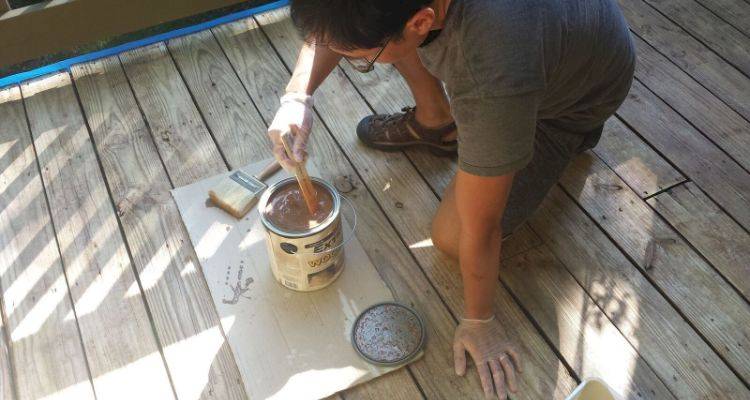
Fill in Gaps for Watertight Fence
This is important to make sure that your fence is protected from water and to avoid having to re-stain your exterior even sooner than expected.
Make sure to fill up any open holes, gaps or wide cracks with wood filler to protect your fence from rain and bad weather conditions. Again, make sure to dry thoroughly before moving on.
Smoothing Surface
Once again, this will probably need doing when staining a fence which you've had for a while, but if you've bought a new fence, then the surface should be smooth.
This can be done by sanding down the wood with sandpaper to get rid of chips and shavings for a simple staining process.
Staining
Staining can be done simply with your materials and a paintbrush. Make sure to evenly apply your chosen stain to each fence panel, allowing it to dry before re-applying or touching the fence.
It's also best to leave the job until a warm and dry day to avoid weather conditions messing up your staining.
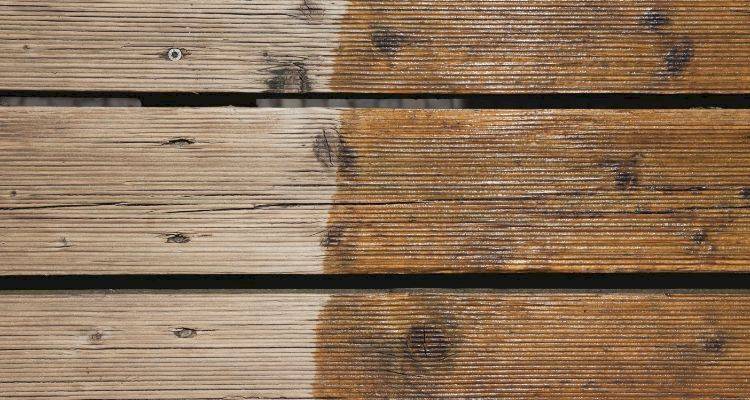
Building Regulations & Planning Permission for Fence Staining
Before you paint or stain your fence, you may want to make sure that it's your fence to treat. Many are not entirely sure which fence is their responsibility and which is their neighbour's.
So, when it comes to repairs and maintenance, you need to find out who is responsible for what.
There is no law about who owns the boundaries around your property and which side of the fence you are responsible for, but you could check the deeds to your home to find out if there are any boundary agreements in place.
Choosing a Fence Stain
When deciding on the right wood stain for you, it's essential to research each different type and how they can benefit your fencing. Each stain holds various chemicals to differentiate between types, offering separate results depending on what you need/prefer.
Below is a list of different types of fence stains.
Oil Stain Cost
This is the most common type of fence stains because they are a reasonable price, clean up easily and offer durable protection throughout all weather types. The typical cost of an oil stain is around £10 to £15 per litre.
Pros
- ✔ Cost-effective
- ✔ Easy to clean
- ✔ Good UV protection
Cons
- ✖ Susceptible for mould and mildew
- ✖ High maintenance
Gel Stain Cost
Gel stains are applied similarly to oil stains but with a thicker texture, which can make the method slightly harder but end with a more refined finish. It's essential to make sure these are applied with as much precision as possible as they dry fast and don't give you a lot of time to alter anything.
The typical price of a gel stain is around £16 to £20 per litre.
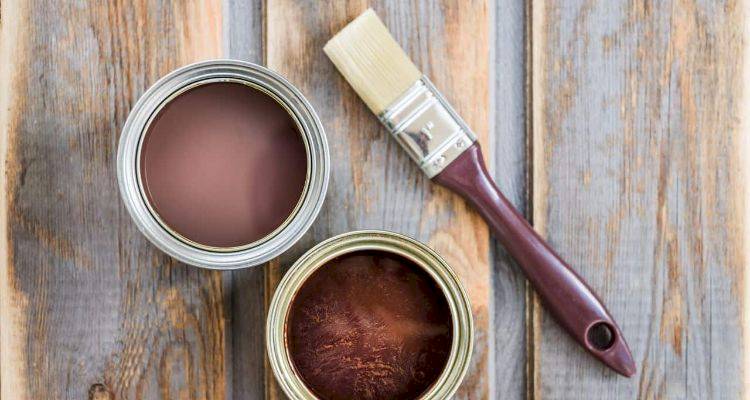
Pros
- ✔ Smooth finish
- ✔ Easy to use
Cons
- ✖ Harder to apply
- ✖ Quick-drying
Dye Stain Cost
Dye stains are very different from typical staining as they're produced in powder form which has to be manually added to water before using by yourself. The regular price of a dye stain is around £20 to £25.
Pros
- ✔ Vibrant colour finish
- ✔ Penetrates deeper into wood
- ✔ Easy to clean
Cons
- ✖ Prone to fading
- ✖ High maintenance
Benefits of Using Fence Stain
Painting a fence isn't difficult, but doing the job properly can be time-consuming and repetitive. The work is definitely worth it, as a proper paint job won't just give your fence a facelift, it will actually extend the life of the fence by protecting it from the elements.
Below is a list of reasons why it's a good idea to stain your fences regularly:
Protection from Elements
Staining your fence is one of the best ways to protect your exterior from the unpredictable nature of outdoor elements and unpredictable weather conditions.
It's not uncommon for rain, frost and even sun to cause damage to wooden fences due to mould, drying up rotting or dampness. Regularly staining is one of the best and easiest ways you can make sure your fence stays long-lasting and protected through waterproofing features.
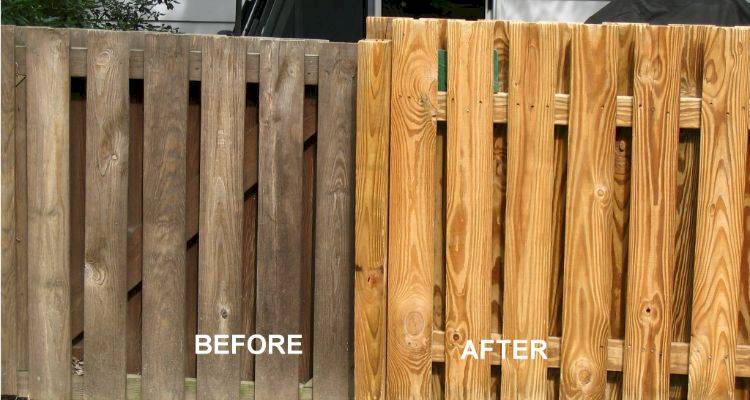
Durable
Your fencing will last a lot longer if you routinely stain it, ensuring that the wood stays dry and well-put. TThis is ideal, especially if the wood is high-quality and you want a longer investment.
Limit UV Damage
Staining can help to safeguard fences from direct sunlight because UV damage can damage the fence's colour over time. If you live in a warmer climate or sunny area, then you'll need to stain your wood regularly every few years to ensure lasting protection.
Kerb Appeal
Some people choose to stain their fences due to the aesthetically pleasing finish that it offers, leaving your wood looking glossy and attractive. A regular stained fence can match various decor and colours throughout your garden and appear neat and attractive.
I have a new build house with a little slope, and I want to put the garden on 2 levels. If I build a retaining wall, all the soil will be up against the fence. How can I make sure I don't damage the fence?
Cost of Removing Fence Stain
Removing fence stains may be needed if your fence has changed colour due to bad weather conditions, resulting in mould, damp, mildew and dirt buildup.
The average cost to cleaning and preparing a medium-to-large fence £400, but prices can range from £250 to £1,000 depending on the size of fence and method of removal.
Given the complexity and time-consuming nature of the task, many homeowners opt to hire professionals to ensure a high-quality finish.
Hiring Contractors to Stain a Fence Checklist
Hiring a contractor to work in your home is something that should be considered thoroughly, so you don't miss out on any options and pick the right person for you.
Below is a general checklist of what to look out for when hiring someone to stain your fence.
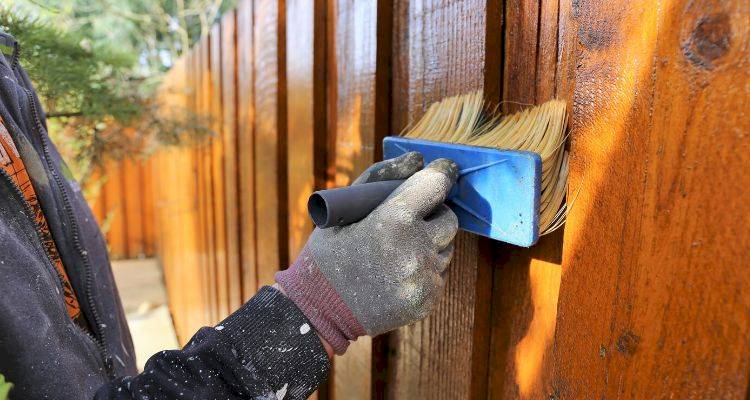
- Ask for samples of staining options to ensure you've picked the right one for your home and environment, as well as checking for the quality and pricing.
- Make sure that your contractor has all the essential training and has completed similar previous jobs like this before.
- Compare prices and quotes between various contractors so you can see if anyone's price sticks out as odd.
- Ask to speak to previous clients and look at references, reviews and pictures of their previous work to ensure your contractor is trusted.
- Check to see if they're part of a trade association and are insured.
- Compile a price list and receipt together before settling on payment so you can visualise what will be included in their services and for what price.
FAQs
How do you remove fence stain from concrete?
Removing stain from concrete can be done easily with warm, soapy water for cleaning, stain remover formula, a paintbrush, and a scraper/putty knife.
Start by cleaning the fence and leave it to dry for 24 hours, apply the stain removal formula evenly, and leave it to sit before scraping off the stain. Finish the job by wiping down the fence with sandpaper and a cloth.
Does the existing stain on the fence have to be removed before applying a new stain?
Generally, stains are oil-based, so applying a new stain over the old stain increases the protection.
Will staining remove old water stains on the fence?
Because water stains penetrate deep into the grain of the wood, cleaning and staining will not remove them completely - though, they will generally improve the appearance.
How soon can I stain a new, pressure-treated fence?
You should not stain a brand new pressure-treated fence immediately. The wood is often sold saturated with preservatives and needs time to dry out, which can take up to several months.
Can I apply fence stain myself?
Yes, you can apply fence stain yourself with the right preparation and tools, but it can be messy and laborious task.



